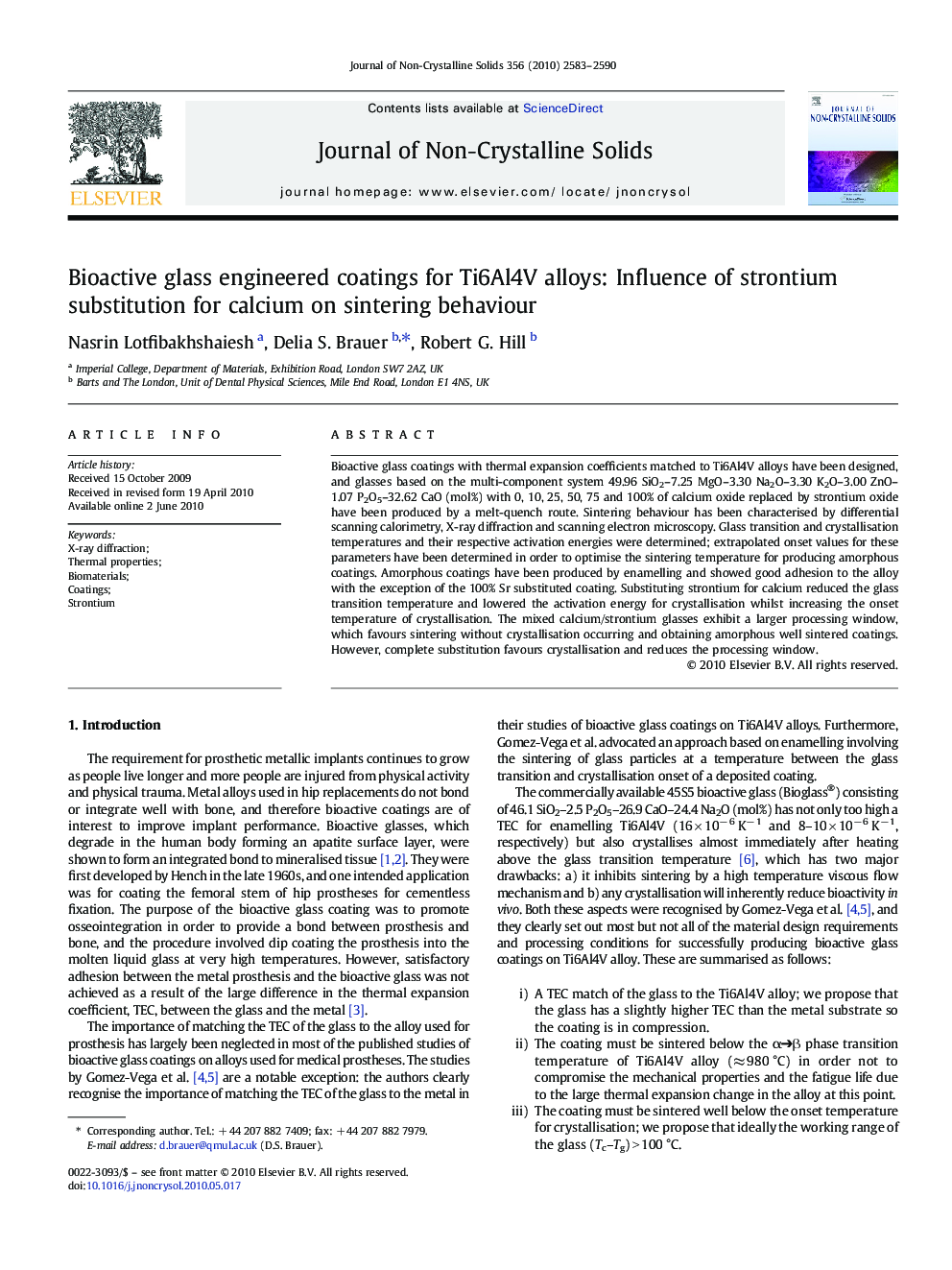| کد مقاله | کد نشریه | سال انتشار | مقاله انگلیسی | نسخه تمام متن |
|---|---|---|---|---|
| 1482795 | 1510488 | 2010 | 8 صفحه PDF | دانلود رایگان |

Bioactive glass coatings with thermal expansion coefficients matched to Ti6Al4V alloys have been designed, and glasses based on the multi-component system 49.96 SiO2–7.25 MgO–3.30 Na2O–3.30 K2O–3.00 ZnO–1.07 P2O5–32.62 CaO (mol%) with 0, 10, 25, 50, 75 and 100% of calcium oxide replaced by strontium oxide have been produced by a melt-quench route. Sintering behaviour has been characterised by differential scanning calorimetry, X-ray diffraction and scanning electron microscopy. Glass transition and crystallisation temperatures and their respective activation energies were determined; extrapolated onset values for these parameters have been determined in order to optimise the sintering temperature for producing amorphous coatings. Amorphous coatings have been produced by enamelling and showed good adhesion to the alloy with the exception of the 100% Sr substituted coating. Substituting strontium for calcium reduced the glass transition temperature and lowered the activation energy for crystallisation whilst increasing the onset temperature of crystallisation. The mixed calcium/strontium glasses exhibit a larger processing window, which favours sintering without crystallisation occurring and obtaining amorphous well sintered coatings. However, complete substitution favours crystallisation and reduces the processing window.
Journal: Journal of Non-Crystalline Solids - Volume 356, Issues 44–49, 1 October 2010, Pages 2583–2590